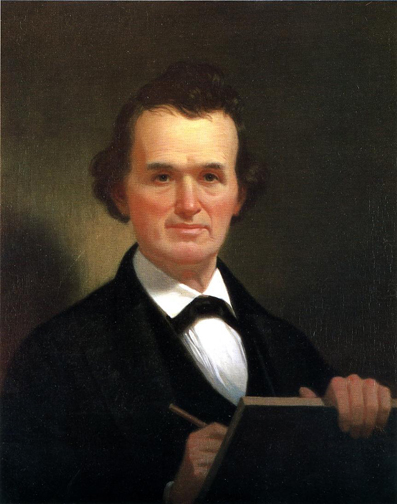
George Caleb Bingham
American Frontier Painter
1811 - 1879

Self Portrait: ca 1877
George Caleb Bingham (1811 - 1879) was an American artist whose paintings of American life in the frontier lands along the Missouri River exemplify the Luminist style. Left to languish in obscurity, Bingham's work was rediscovered in the 1930's. He is now widely considered one of the greatest American painters of the 19th century.
Born in Augusta County, Virginia, Bingham was the second of seven children of Mary Amend and Henry Vest Bingham. Upon their marriage, Mary's father Matthias Amend gave Bingham ownership of the family mill, 1,180 acres of land, and several slaves with the agreement that Matthias could live with the family for the rest of his life. Henry Bingham offered the land and mill as surety for a friend's debt and, when the friend died in 1818, all was lost. The Bingham family soon moved to Franklin, Missouri "where the land was said to be bountiful, fertile and cheap."
Bingham was a self-taught artist. His sole childhood exposure to the field was as a nine-year-old boy, when famed American portraitist Chester Harding visited Franklin looking for business, having recently sketched Daniel Boone in Warren County, Missouri. George assisted Harding during his brief stay, an experience that left a powerful impression.

Unfinished Portrait of Daniel Boone
by Chester Harding: 1820
In 1823, Bingham's father Henry, then judge of Howard County Court, died of malaria on December 26 at the age of thirty-eight. To keep the family going, Mary Bingham opened a school for girls; George, then twelve, worked as school janitor to help keep the family afloat. At age sixteen, Bingham apprenticed with cabinet maker Jesse Green. After Green moved away, Bingham apprenticed with another cabinet maker, Justinian Williams. Both tradesmen were Methodist ministers. While under their tutelage, Bingham studied religious texts, preached at camp meetings and thought about becoming a minister. He also considered becoming a lawyer.
By age nineteen, Bingham was painting portraits for $20.00 apiece, often completing the works in a single day. He drummed up work in both Franklin and Arrow Rock and, while his painting abilities were still developing, succeeded in impressing his patrons with his strong draftsmanship and ability to capture the likeness of his subject. Soon Bingham was ready to travel to Saint Louis to ply his trade but contracted measles. The illness left him weak and permanently bald.
In 1836, Bingham married Sarah Elizabeth Hutchison, who bore him four children over the next twelve years. From 1837-1845 they lived in Arrow Rock, Saline County, where their house has been designated a National Historic Landmark. She died in 1848 at the age of twenty-nine. Before his mother Mary died in 1851, she helped Bingham rear his children.
George married twice more, first to Eliza Thomas, who had to be institutionalized and died in a mental asylum in 1876. He next married Martha Lykins, who lived until 1890.
_ca_1849_50.jpg)
Portrait of Mrs. George Caleb Bingham
(nee. Eliza K. Thomas): ca 1849-50
By 1838, Bingham was already beginning to make a name as a portrait artist in Saint Louis, the major city of the territory; his studio was visited by several prominent local citizens and statesmen, including the lawyer James S. Rollins, who was to become a life-long friend. While he frequently worked in the city, Bingham kept his principal residence in Arrow Rock for years. To further his education, Bingham spent three months in Philadelphia, Pennsylvania before continuing on to New York City to visit the National Academy of Design exhibition.
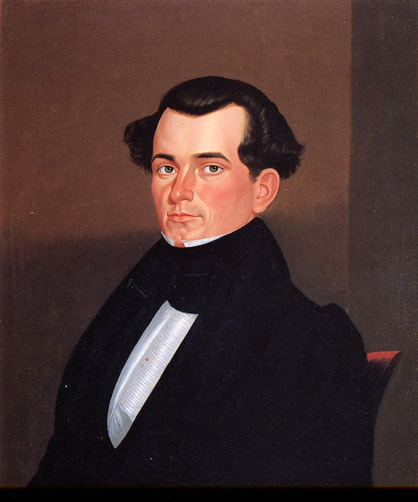
After moving his family to Saint Louis permanently, in 1848 Bingham was elected to the Missouri General Assembly, one of the few artists to serve in elected political office. His interest in politics was reflected in his paintings of the vivid political life on the frontier. Bingham later took several state political appointments as well.
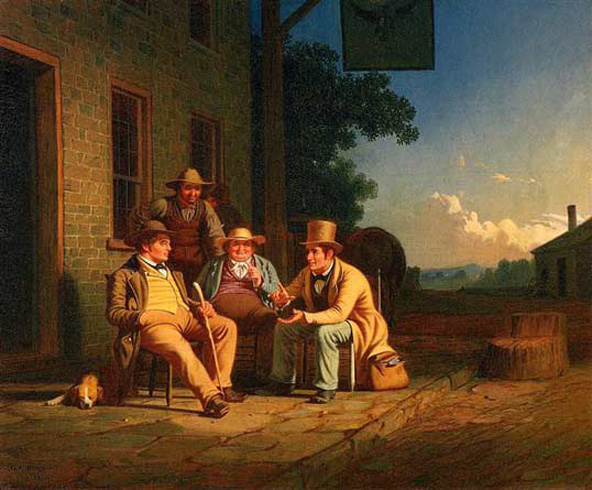
Canvassing for a Vote: 1851
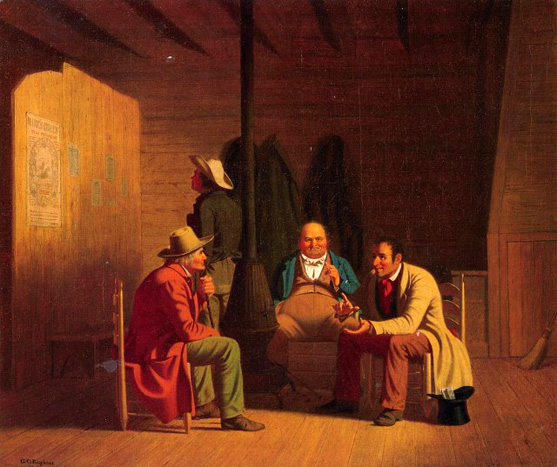
Country Politician: 1849
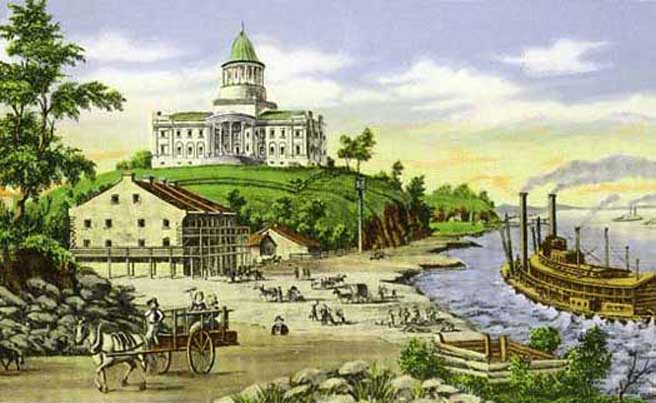
Missouri State Capitol: 1848

Stump Speaking: 1853
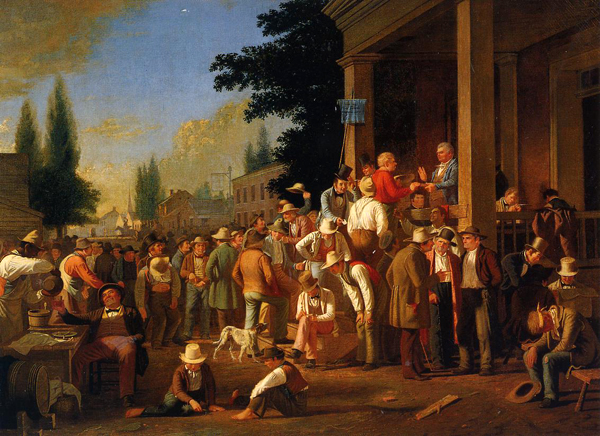
The County Election: 1852
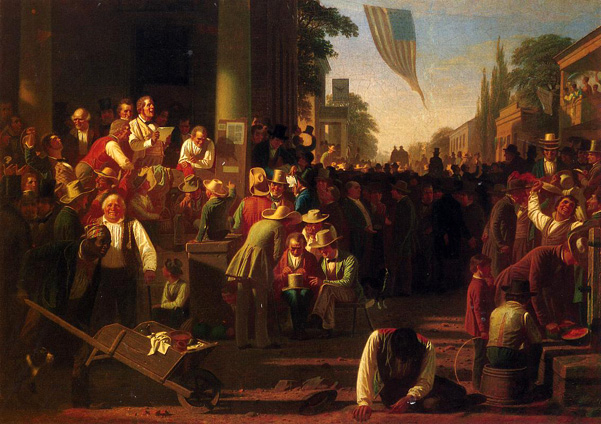
The Verdict of the People: 1854
In 1856 Bingham moved to Europe with his second wife Eliza and youngest daughter. First they stayed in Paris for several months, where Bingham fulfilled a long-cherished desire and studied the Old Masters at the Louvre Museum, likely his chief reason for going abroad. They went on to Düsseldorf, Germany, where they lived until 1859. Bingham lived and worked among the American and German artists of the art colony, among whom was the German-American Emanuel Leutze, the most prominent historical painter in the United States. (Washington Crossing the Delaware was then his most famous work.) Leutze was unusual for living in both countries and had an open studio in Düsseldorf, where he welcomed Bingham as a friend and already successful artist. While in Germany, Bingham worked on important commissions from the Missouri State Legislature, as well as independent paintings.
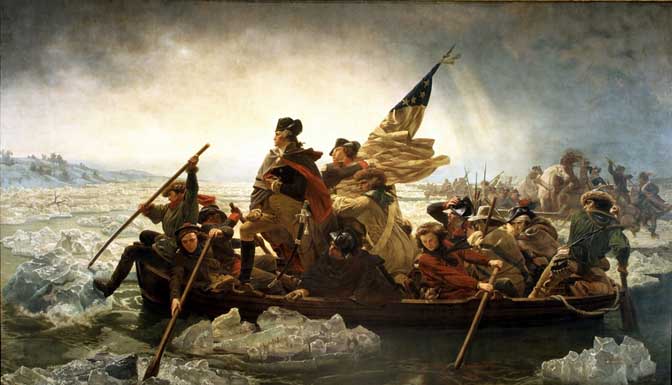
WASHINGTON CROSSING THE DELAWARE
by Emanuel Gottlieb Leutze
Upon his return to America, Bingham began painting more portraits, which had always been his "bread and butter" work. He also returned to politics. During the American Civil War, Bingham was appointed State Treasurer of Missouri. He continued to stay involved in politics in the post-Civil War years through political appointments. In 1874, he was appointed president of Kansas City Board of Police Commissioners, and appointed the first chief of police there. In 1875, the governor appointed Bingham as Adjutant-General of Missouri, and thereafter he was often referred to as General Bingham.
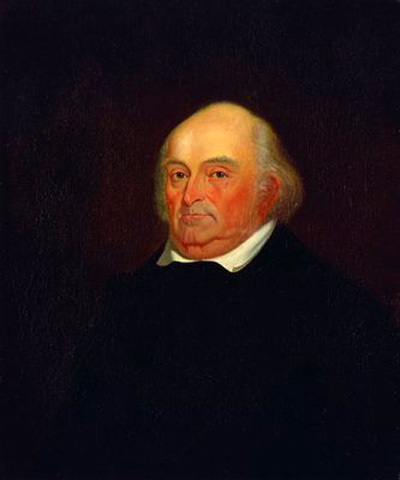
Captain William Johnston: 1849
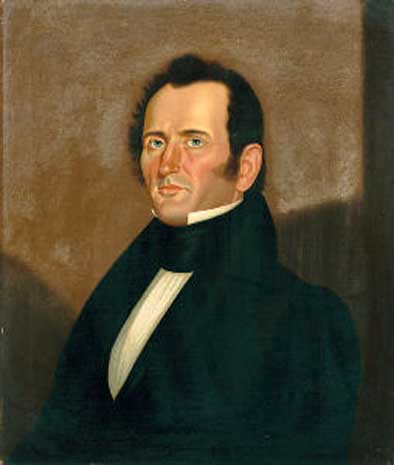
Col. Scubael Allen: 1834
_1834.jpg)
Mrs. Shubael Allen (Dinah Ayers Trigg): 1834
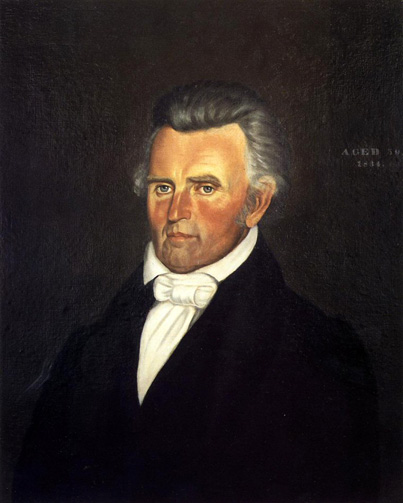
Dr. John Sappington
.jpg)
Jane Breathitt Sappington
(Mrs. John Sappington)
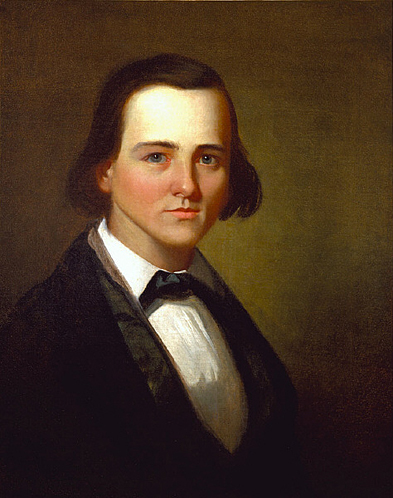
Dr. Oscar Fitzland Potter: 1848
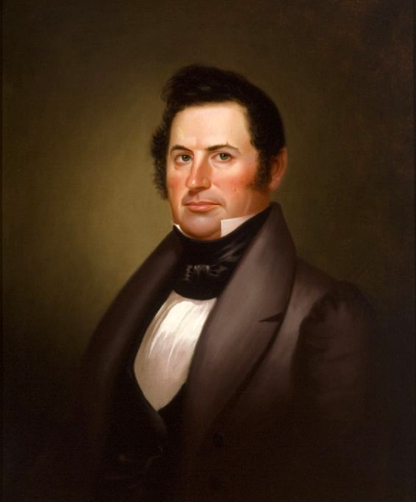
General Richard Gentry: 1837
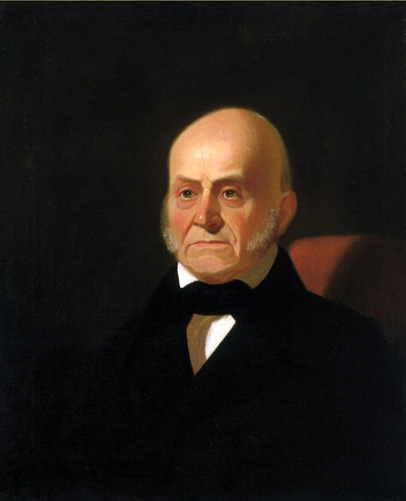
John Quincy Adams: ca 1844
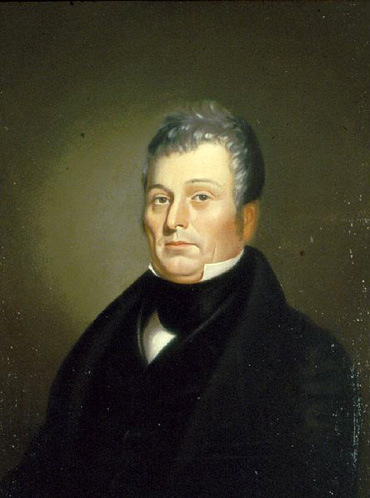
Judge Henry Lewis: 1838
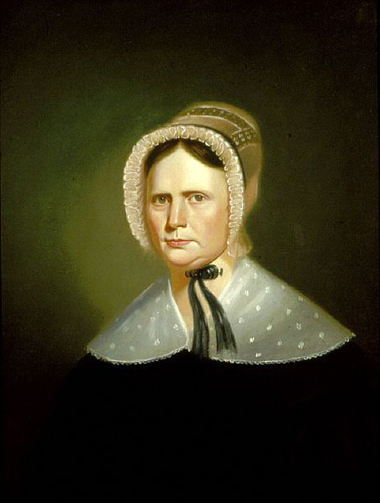
Mrs. Henry Lewis: 1838
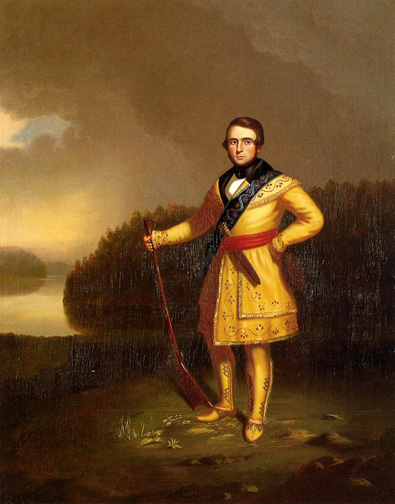
Leonidas Wetmore: 1840
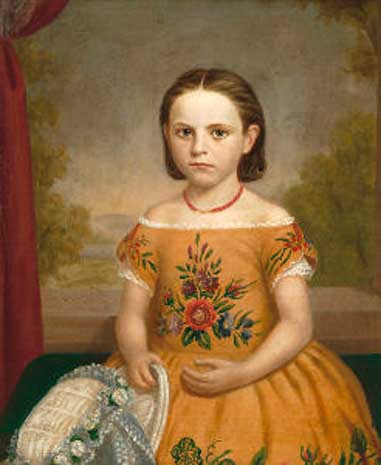
Miss Annie Allen: ca 1859

Miss Sallie Ann Camden
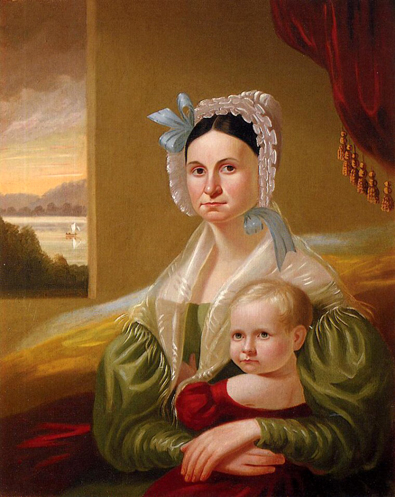
Mrs. David Steele Lamme and Son, William Wirt
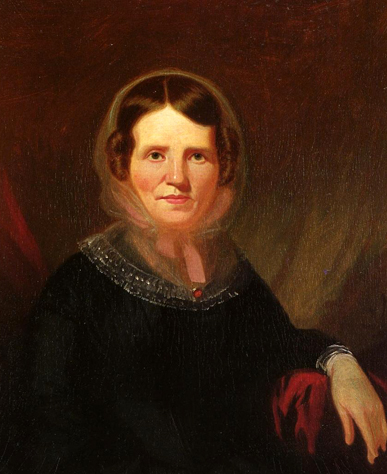
Portrait of a Woman with a Red Broach: ca 1849
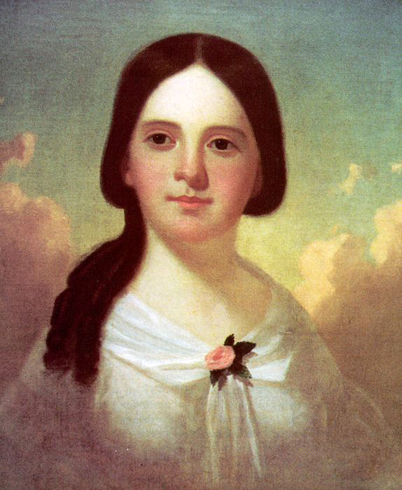
Portrait of an Unknown Girl: 1849

Portrait of Reverend John Glanville
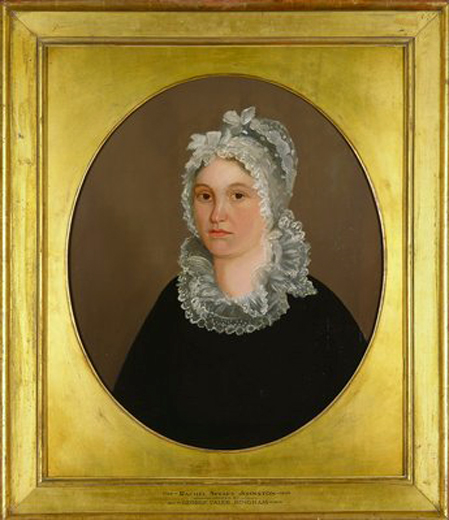
Rachel Spears Johnston: 1837

Self Portrait of the Artist: 1834
Toward the end of his life, although quite ill, Bingham was appointed the first Professor of Art at the University of Missouri in Columbia, Missouri where he managed to see only a few students before his death.
One of Bingham's most famous paintings, this work is owned by the Metropolitan Museum of Art in New York. Painted around 1845 in the style called luminism by some historians of American art, it was originally entitled, French-Trader, Half-breed Son. The American Art Union thought the title potentially controversial and renamed it when it was first exhibited. It reflected the reality of fur traders' common marriages with Native American women; in Canada the Métis ethnic group formed as a result. The painting is haunting for its evocation of an era in American history-note, in particular, the liberty cap worn by the older man. The animal in the boat is widely accepted as a bear cub and not a cat.
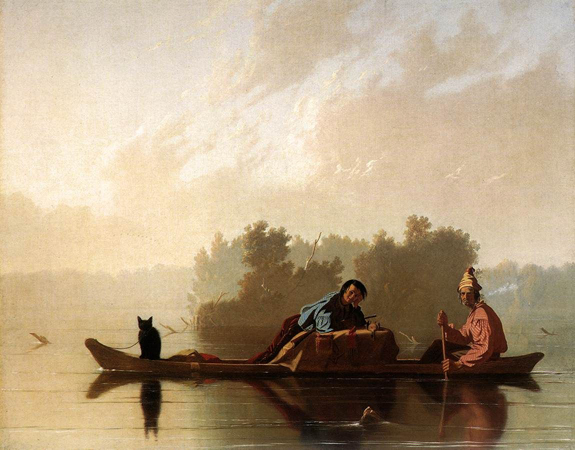
Fur Traders Descending the Missouri: 1845
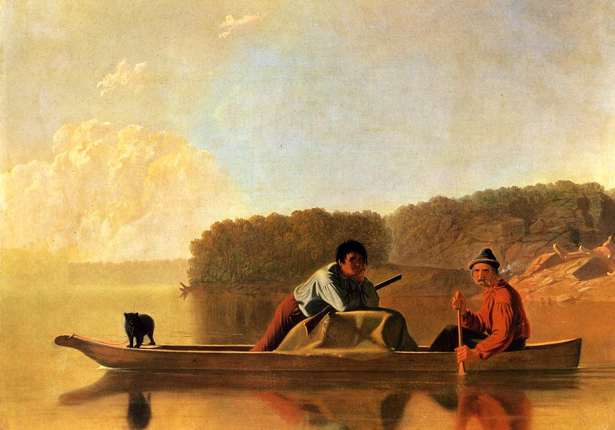
Trappers' Return: 1851
Bingham Bicentennial 2011: The George Caleb Bingham Catalogue Raisonné Supplement Of Paintings & Drawings, directed and edited by Fred R. Kline with advisory board members Paul Nagel and William Kloss, has announced the addition of ten recently discovered paintings by George Caleb Bingham, whose Bicentennial is being celebrated in 2011. The paintings exhibited, catalogued, and illustrated online at http://www.GeorgeCalebBingham.org include: "Horse Thief" (a narrative landscape), and portraits of Lewis Allen Dicken Crenshaw, Fanny Smith Crenshaw, Frederick Moss Prewitt, Civil War Lt. Col. Levi Pritchard, Charles Chilton, Samuel Chilton, Thomas B. Hudson, Missouri Steamboat Capt. Joseph Kinney, and a currently unidentified woman. The GCBCRS continues E. Maurice Bloch's Bingham Catalogue Raisonné of paintings, begun in the 1940's, which includes Bingham's known paintings up to 1986. Nearly all Bingham's over 500 recorded paintings (460 are portraits) are not signed, including famous ones like "Fur Traders Descending the Missouri", "The Emigration of Daniel Boone" and "The County Election". Bingham neglected record keeping and signing, allowing scores of paintings to remain unidentified, more than any other American master. Eight of the ten paintings authenticated by the GCBCRS Committee were unknown to Bloch, the other two were unsolved mysteries; all ten were unsigned.
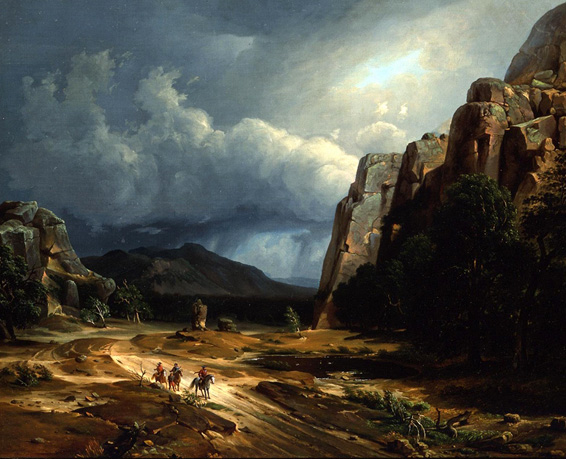
Horse Thief: 1852
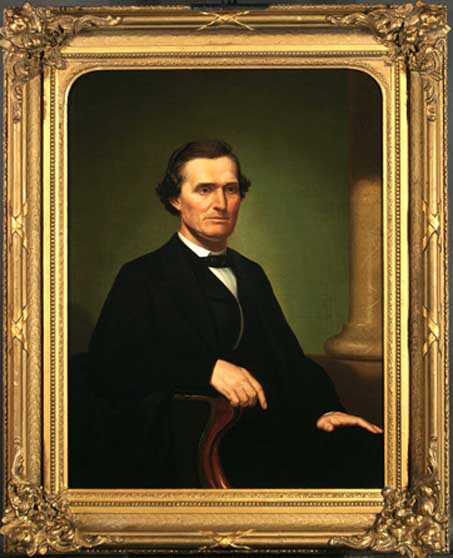
Lewis Allen Dicken Crenshaw

Fanny Smith Crenshaw
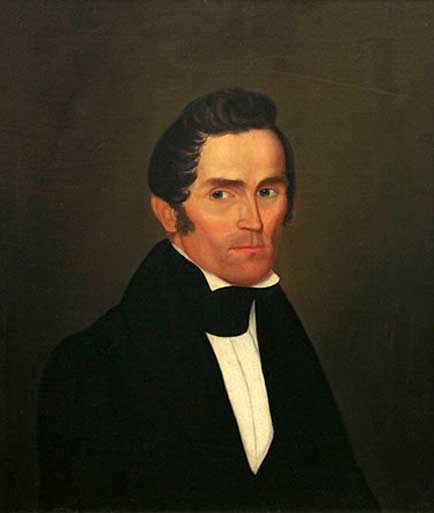
Frederick Moss Prewitt
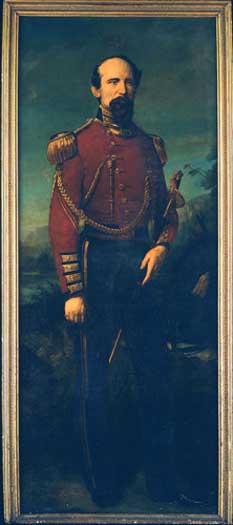
Civil War Lt. Col. Levi Pritchard

Charles Chilton
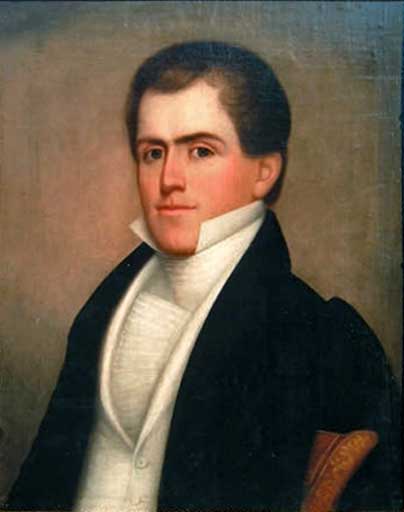
Samuel Chilton

Thomas B. Hudson

Captain Joseph Kinney
Quoted From: George Caleb Bingham - Wikipedia
Sources:
Portraits and Politics, the Life of George Caleb Bingham - Selected Works
The Athenaeum - Displaying artworks for George Caleb Bingham
Links of Interest:
George Caleb Bingham (1811 - 1879) - Famous Missourians - The State Historical Society of Missouri
George Caleb Bingham - Artist of Missouri and the American Frontier
Artworks by George Caleb Bingham
A Few Selected Works of George Caleb Bingham
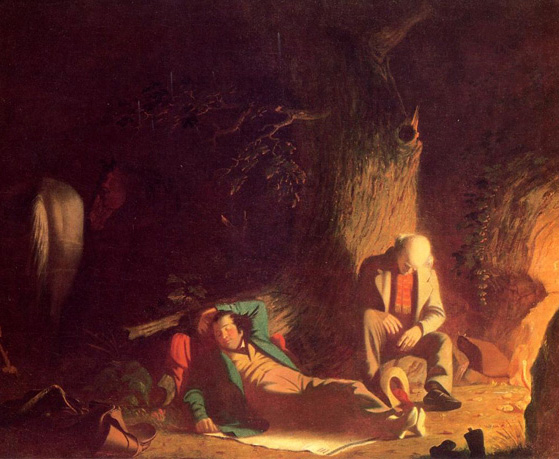
Belated Wayfarers: Date Unknown

Boatmen on the Missouri: 1846
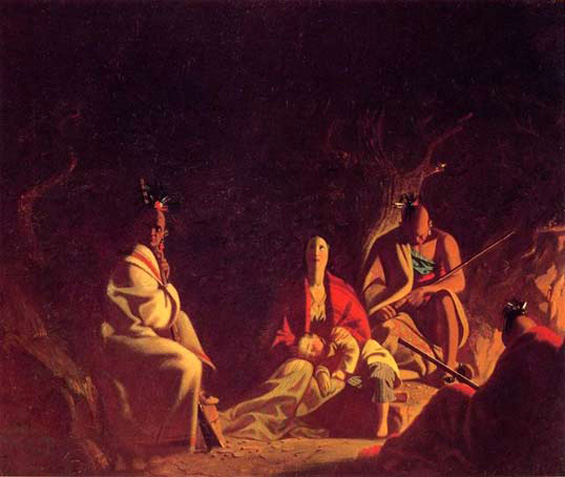
Captured by the Indians: 1848
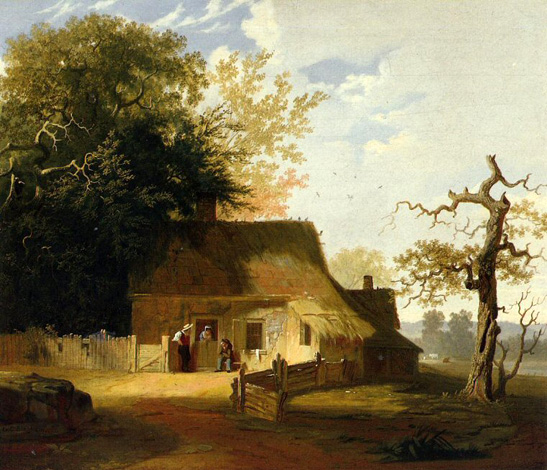
Cottage Scene: 1845
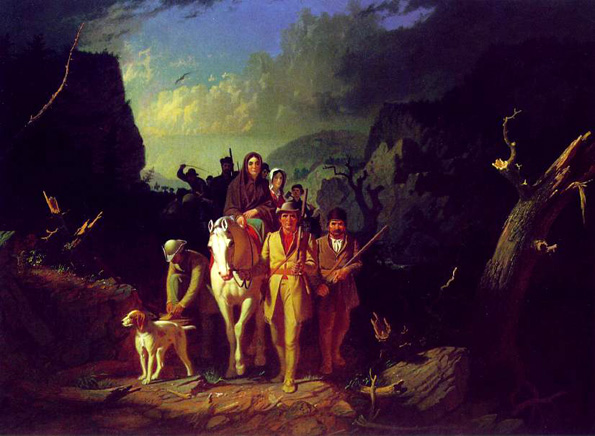
Daniel Boone Escorting Settlers Through the
Cumberland Gap: 1851

Deer in Landscape
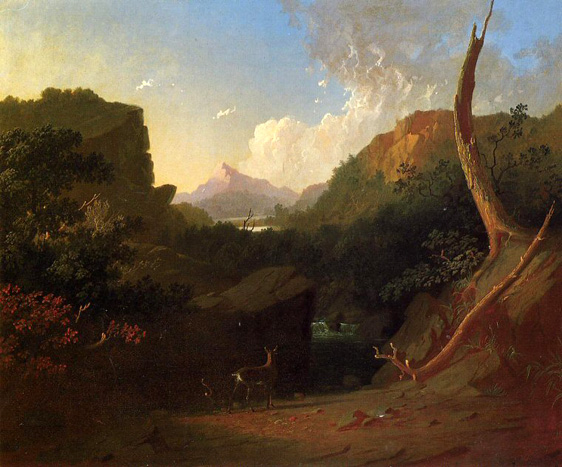
Deer in Stormy Landscape: 1852
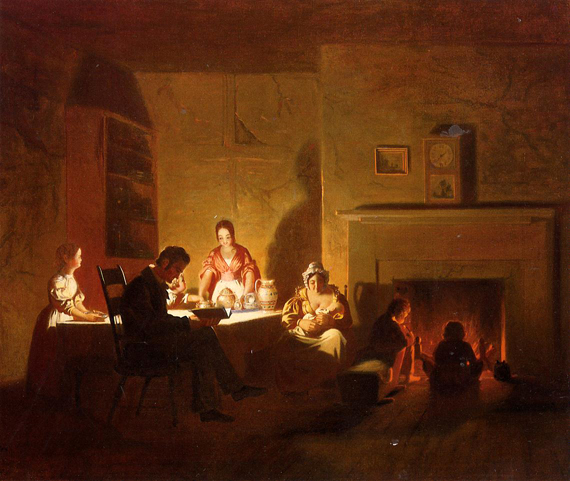
Family Life on the Frontier: 1845
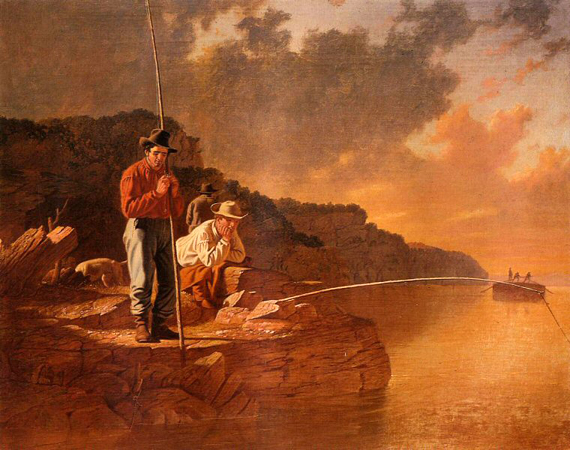
Fishing on the Mississippi: 1851-52
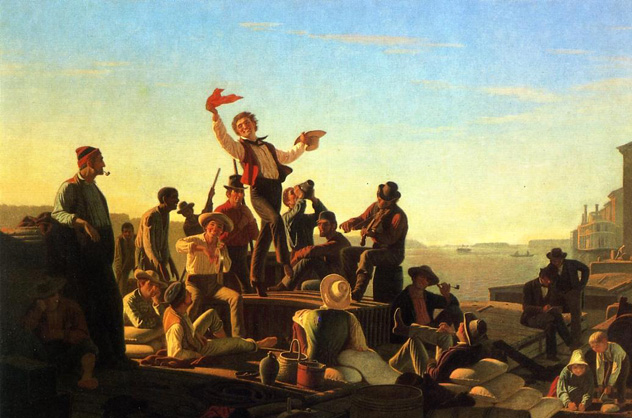
Jolly Flatboatmen in Port: 1857

Landscape Rural Scene: 1845

Landscape with Cattle: 1846

Landscape with Waterwheel and Boy Fishing: 1853

Lighter Relieving a Steamboat Aground: 1847
The middle of the 19th Century brought a Psychological Conflict within the fabric of our society to understand the nature of what we should be as a nation. Missouri was a state that personfied the moral struggle and conflict that engulfed our nation in the latter part of this of a 'Century of Shame'. George Caleb Bingham shows this conflict and struggle in a significant Post Bellum painting that still remains instructive.
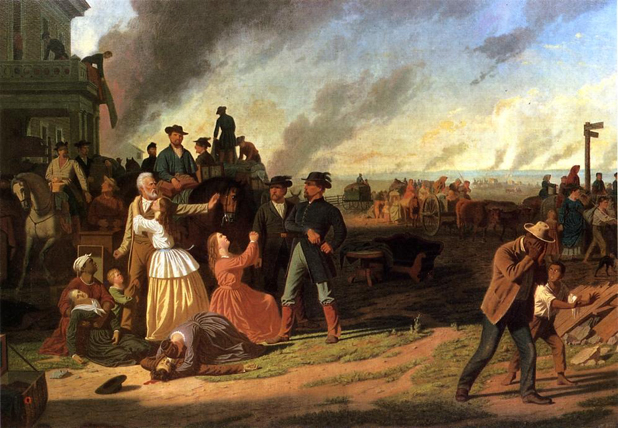
Martial Law
(aka Order Number 11: ca 1869-70
William Quantrill joined the Confederate Army on the outbreak of the American Civil War. He fought at Lexington but disliked the regimentation of army life and decided to form a band of guerilla fighters. As well as attacking Union troops the Quantrill Raiders also robbed mail coaches, murdered supporters of Abraham Lincoln and persecuted communities in Missouri and Kansas that Quantrill considered to be anti-Confederate. He also gained a reputation for murdering members of the Union Army that the gang had taken prisoner.
By 1863 William Quantrill was the leader of over 450 men. This included Frank James, Jessie James, Cole Younger and James Younger. With this large force he committed one of the worst atrocities of the Civil War when he attacked the town of Lawrence. During the raid on 21st August, 1863, Quantrill's gang killed 150 inhabitants and destroyed over 180 buildings.
The district Union commander, General Thomas Ewing, was furious when he heard what the Quantrill Raiders had done. On 25th August 1863, he issued Order No 11. This gave an eviction notice to all people in the area (Jackson, Cass, Bates and Vernon counties) who could not prove their loyalty to the Union cause. Ewing's decree virtually wiped out the entire region. The population of Cass County dropped from 10,000 to 600.
An officer in the Union Army, George Caleb Bingham, was appalled by the consequences of Order No 11 and wrote to General Thomas Ewing saying: "If you execute this order, I shall make you infamous with pen and brush". In 1868 Bingham painted a picture on Ewing's crime. Frank James, who had taken part in the Kansas raid, commented: "This is a picture that talks."
Quoted From: Ewing's Order No 11

Mississippi Boatman: 1850
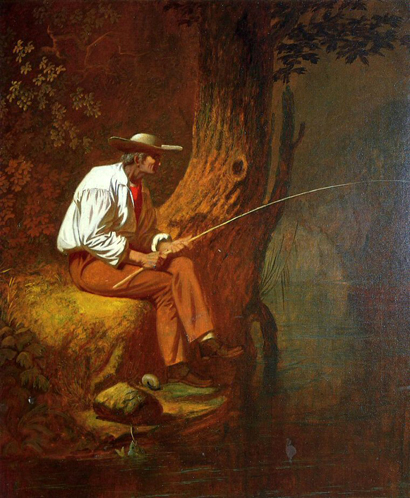
Mississippi Fisherman
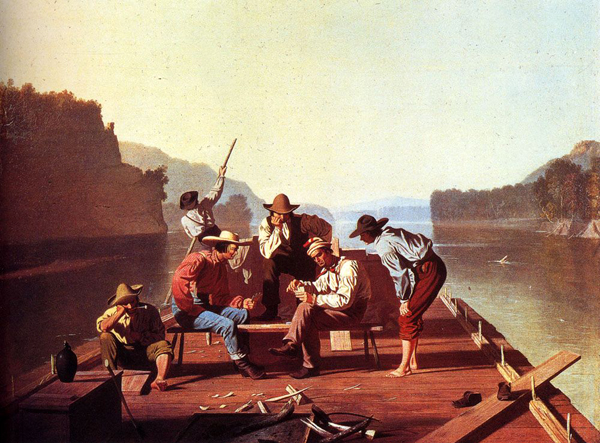
Raftsmen Playing Cards: 1847
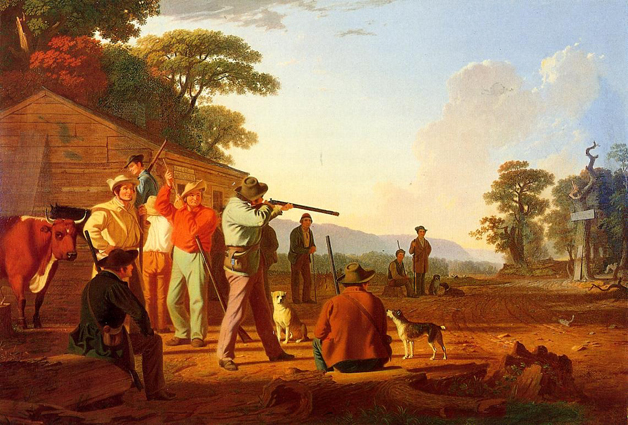
Shooting for the Beef: 1850
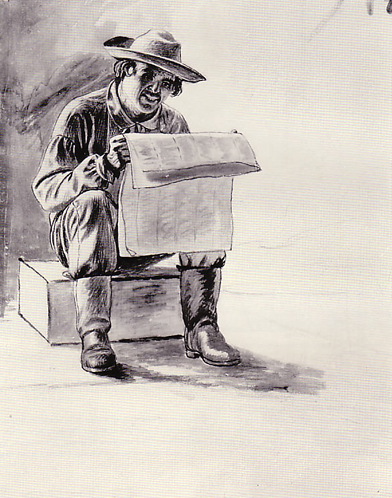
Study of a Man Reading: 1844
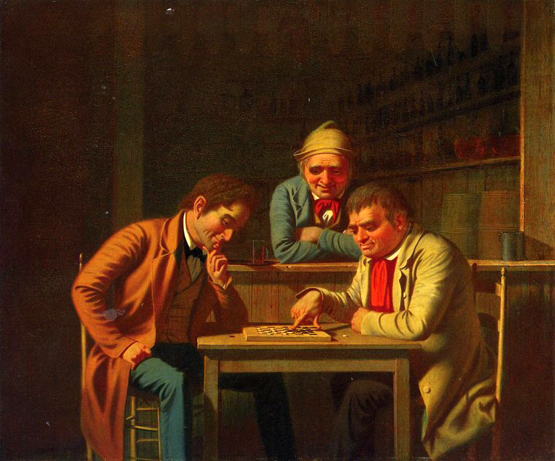
The Checker Players: 1850
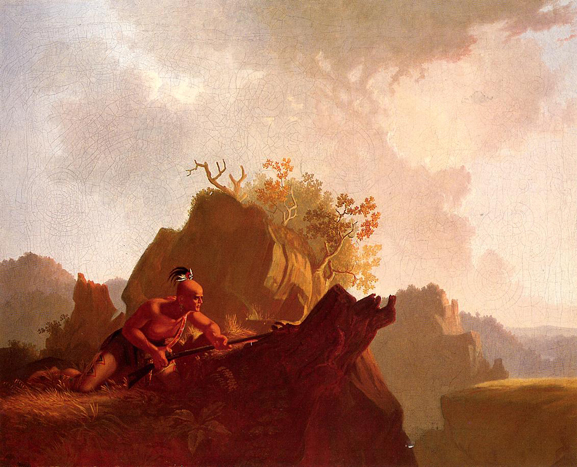
The Concealed Enemy: 1845
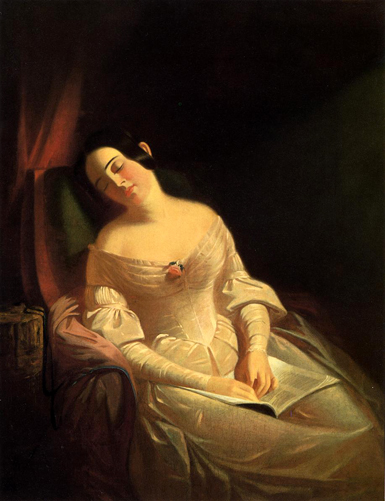
The Dull Story: 1843-44
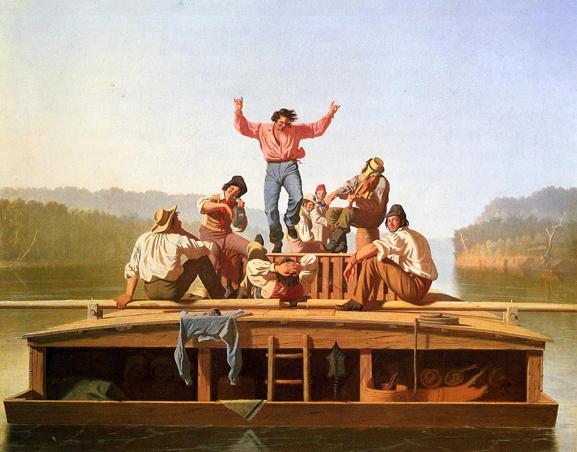
The Jolly Flatboatmen: 1846
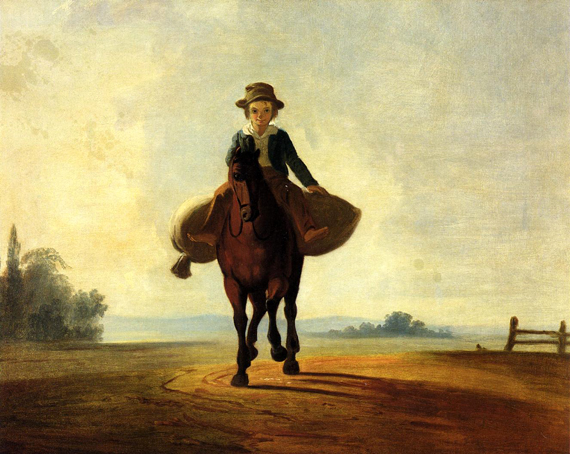
The Mill Boy:
The Boonville Juvenile Clay Club Banner: 1844
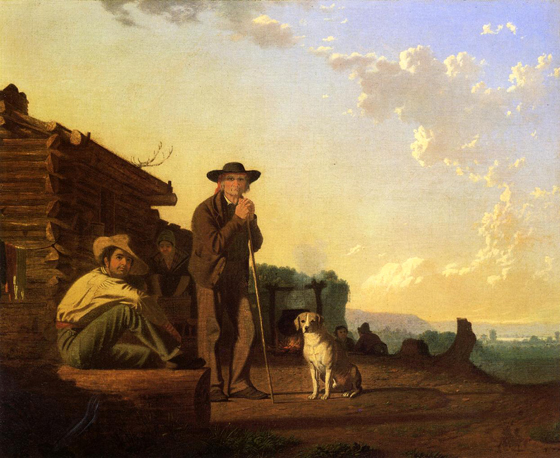
The Squatters: 1850
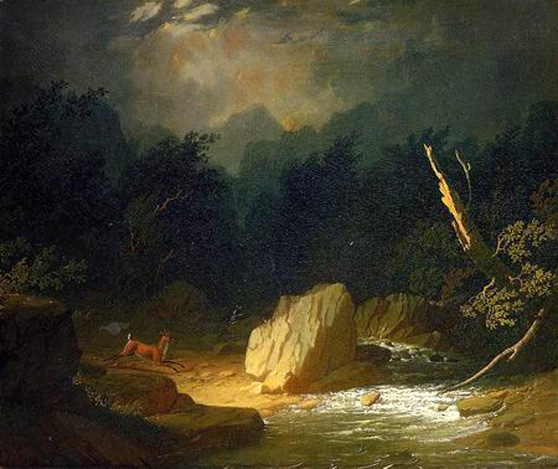
The Storm: 1852
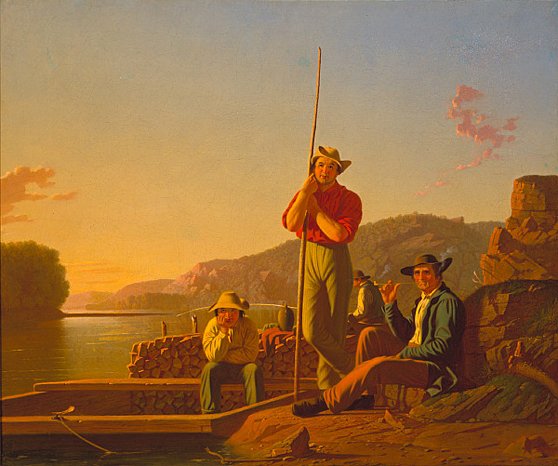
The Wood Boat: 1850
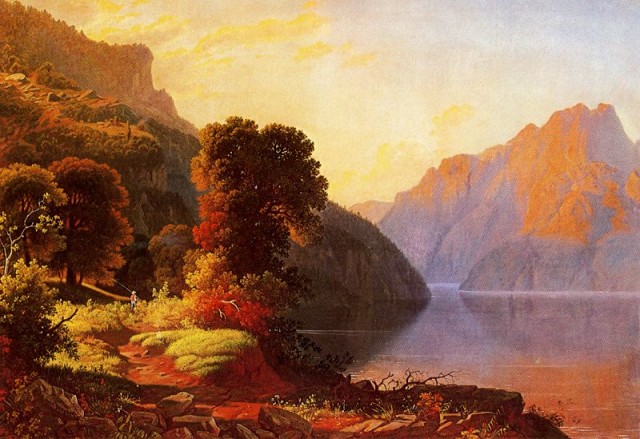
View of a Lake in the Mountains: 1853
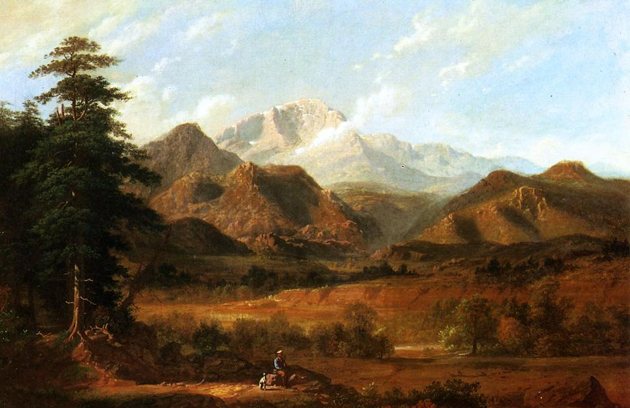
View of Pike's Peak: 1872
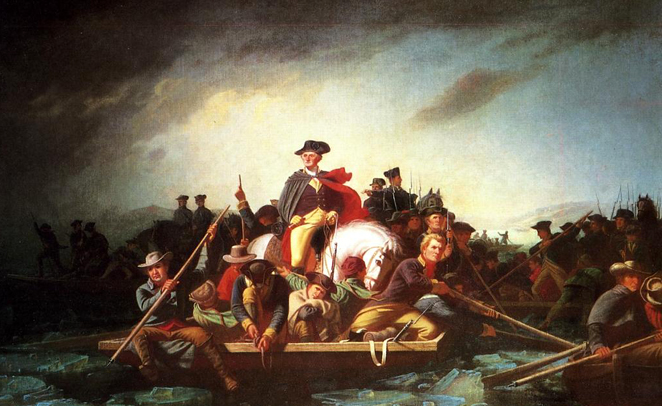
Washington Crossing the Delaware: ca 1856-71
Personal Observation: George Caleb Bingham, I am sure, was inspired by the much more famous painting of the same subject by Emanuel Leutze. Remember, he was friend and mentor of George Caleb Bingham in whose studio Bingham worked while in Europe. It may have been an attempt to emulate a friend which, I feel, is one of the most personal expressions of respect between colleagues and friends.
~ Senex Magister
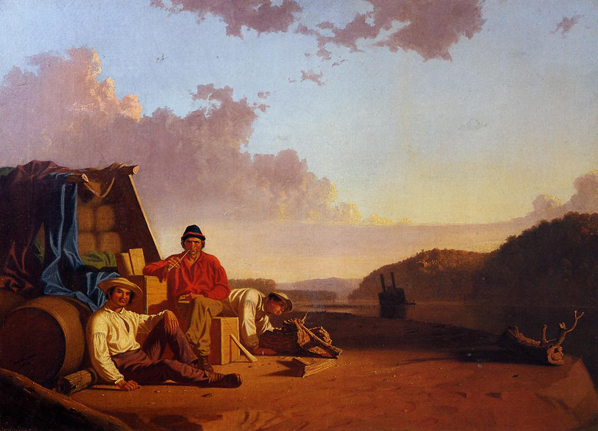
Watching the Cargo: 1849
_1854.jpg)
Watching the Cargo at Night
(aka Raftsmen at Night): 1854
George Caleb Bingham was an individual and an artist whom I was unaware of and came upon by accident. Yet, I was quickly drawn to his work since he appears to me to have lived during a transitional period in our history. Much is said about the impact of technology upon life today. Bingham saw and experienced a change in transportation when life had been tied, at one time, to inland water ways such as the Mississippi and the Missouri Rivers which many of his paintings reflect. Then with the development of a rail system that was able to efficiently cross our Continent we, as a national people, saw a fundamental change in life and politics. It can be explained in two simple words that still has its detractors today as a result of their belief in the perceived harm it brought to our national character and especially our treatment of Native Americans. Those two word of course are "Manifest Destiny".
~ Senex Magister
Return to Pagina Artis
Return to Bruce and Bobbie's Main Page.